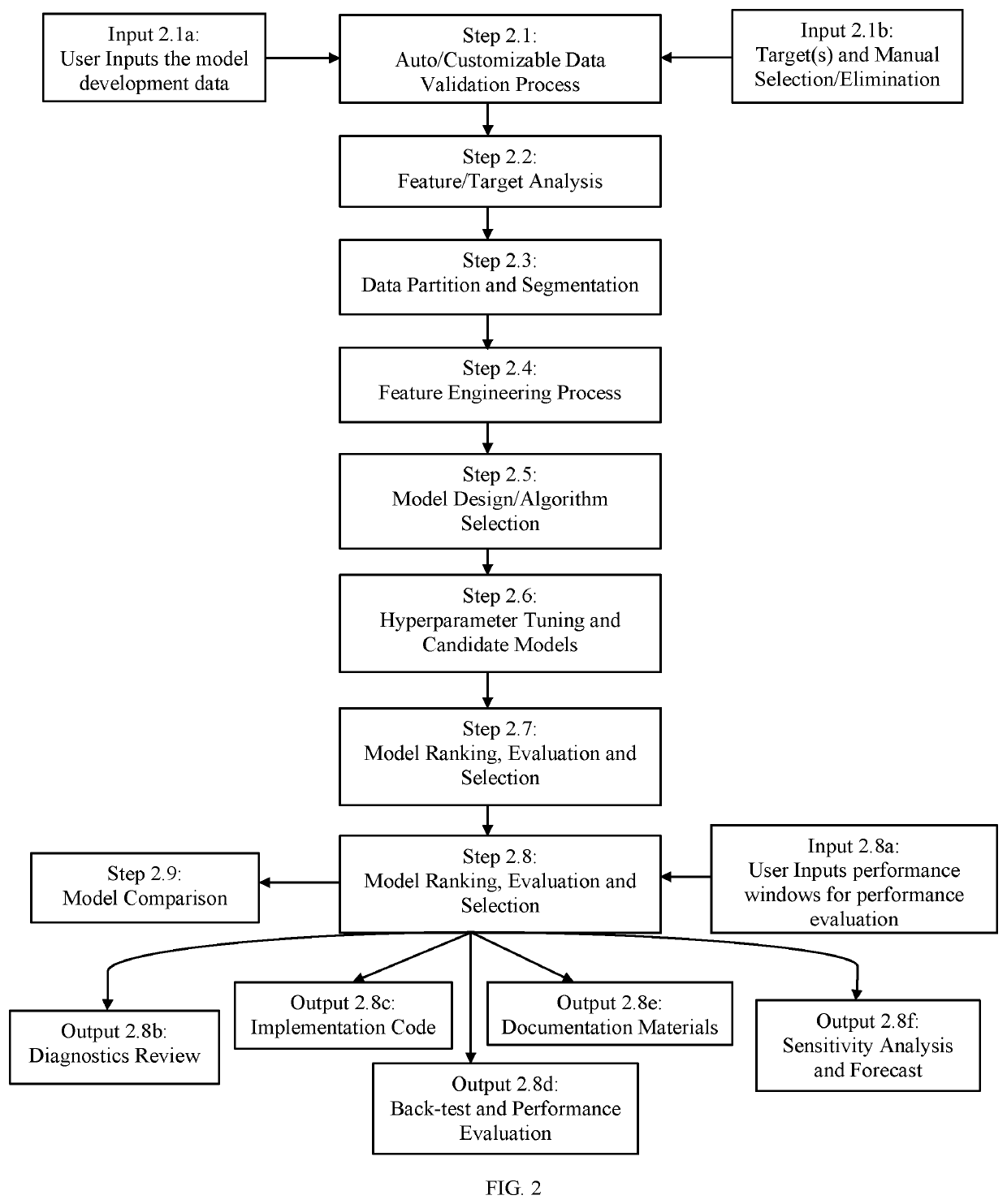Smart time series and machine learning end-to-end (E2E) model development enhancement and analytic software
a technology of machine learning and model development, applied in the field of business model development and enhancement software, can solve the problems of lack of technical and functional features to intake and process all the necessary input from users, failure to provide any consideration, and no statistical model is per
- Summary
- Abstract
- Description
- Claims
- Application Information
AI Technical Summary
Benefits of technology
Problems solved by technology
Method used
Image
Examples
first embodiment
[0045]FIG. 1 presents the invention, specifically a flowchart of a high-level flow of the time series model development structured in the STSA. Inputs 1a, 1b, 2a, 5a and 7a represent user input into the software in the form of data or configuration settings. Steps 1-10 are automated features of the software with the necessary configuration settings made by the user. Outputs 51, 52, and 53 represent output information resulting from the respective steps from which they stem.
[0046]Specifically, Step 1 represents an Auto-Data Validation Process step. Data is a necessity to any model development. No matter how powerful a candidate machine learning algorithm is, the quality of end product is dependent on the quality of the data the algorithms are being trained on. Models learn from the training data, which is the data used to develop the model. It is best practice to separate validation data sets and out-of-sample data sets to ensure the trained model performs adequately on the validatio...
second embodiment
[0059]FIG. 2 presents the invention, specifically a flowchart of a high-level flow of the MLWay software. Steps 2.8b-f are output. Inputs 2.1a-b and 2.8a represent user input into the software in the form of data or configuration settings. Steps 2.1-2.9 are automated features of the software with the necessary configuration settings made by the user. Outputs 2.8a-e represent output information resulting from the respective steps from which they stem.
[0060]Step 2.1 represents an Auto / Customizable Data Validation Process, which is analogous to the Step 1 of the embodiment of FIG. 1. The following are the checks applied by the MLWay software, each of which are common to the STSA software discussed above, to ensure data quality, thereby offering solutions to handle these issues for the user: Duplicate identification based on segment and time ID, wherein MLWay offers eliminations of duplicates manually or through a standardized approach; missing values in the data, wherein MLWay allows u...
embodiment 1
[0063]Step 2.4 represents Feature Engineering Process. Feature engineering is the process of using domain knowledge to extract features from raw data that may have strong explanatory power for the target. These features have the potential to improve the performance of the end model manyfold. Feature Engineering process is one of the most crucial steps of any model development and has great implications on the model performance. Poor feature engineering can result in poor model performance or lost opportunity. Strong feature engineering results in more robust models in every aspect such as better stability and accuracy. Feature Engineering is a business decision informed by Business intuition and can be improved through statistical analysis and exploration where innovation and creativity play an important role. MLWay has an innovative and creative approaches to guide user to conduct robust feature engineering that includes the following processes, some of which are common to
[0064]Fea...
PUM
 Login to View More
Login to View More Abstract
Description
Claims
Application Information
 Login to View More
Login to View More - R&D
- Intellectual Property
- Life Sciences
- Materials
- Tech Scout
- Unparalleled Data Quality
- Higher Quality Content
- 60% Fewer Hallucinations
Browse by: Latest US Patents, China's latest patents, Technical Efficacy Thesaurus, Application Domain, Technology Topic, Popular Technical Reports.
© 2025 PatSnap. All rights reserved.Legal|Privacy policy|Modern Slavery Act Transparency Statement|Sitemap|About US| Contact US: help@patsnap.com


